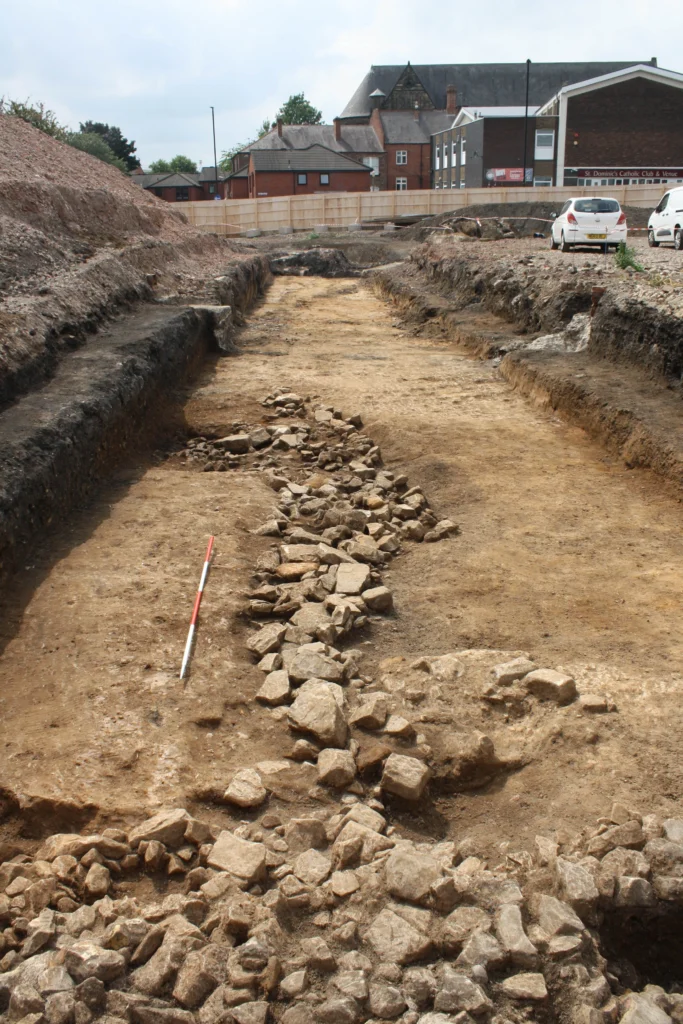Remnants of Ancient Roman Turret Discovered at Hadrian’s Wall in England
Remnants of a turret from Hadrian’s Wall were unearthed by archaeologists during construction work for student accommodations in Ouseburn, near Newcastle, England.

Hadrian’s Wall was a defensive fortification that spanned 73 miles across Roman Britain. Sixteen stone forts were built every 1,000 paces, with 80-mile castles, turrets and 6 supply forts set in between.
Construction along the Stonegate Road route began in 122 CE and took seven years to complete.
The turret is the only known example of its kind found east of Newcastle. Additionally, the team uncovered a walled ditch and six berm obstacle pits. The finds were announced on Wednesday in a press release by Pre-Construct Archaeology.
Turret 3a, as the structure is now known, is roughly 39 feet long, with foundations that run as long as 8 feet wide.
No remnants of clay or flagged floor surface were found within the structure, and the archaeologists said this loss may have resulted from construction or levelling undertaken during the 19th or 20th century.
They did, however, find a single fragment of a tegula, a tile used in roofing by Romans, among the foundations of the northern wall.
Six shallow pits recorded within the berm, the area between the wall and the wall ditch, would have held cippi, or sharpened branches.
Scott Vance, the site director for the find, said the discovery “has demonstrated that the potential for significant archaeological remains relating to Hadrian’s Wall can survive in the more built-up areas of urban Tyneside.”
The proposed student accommodations will be designed around the turret, which will be preserved.





